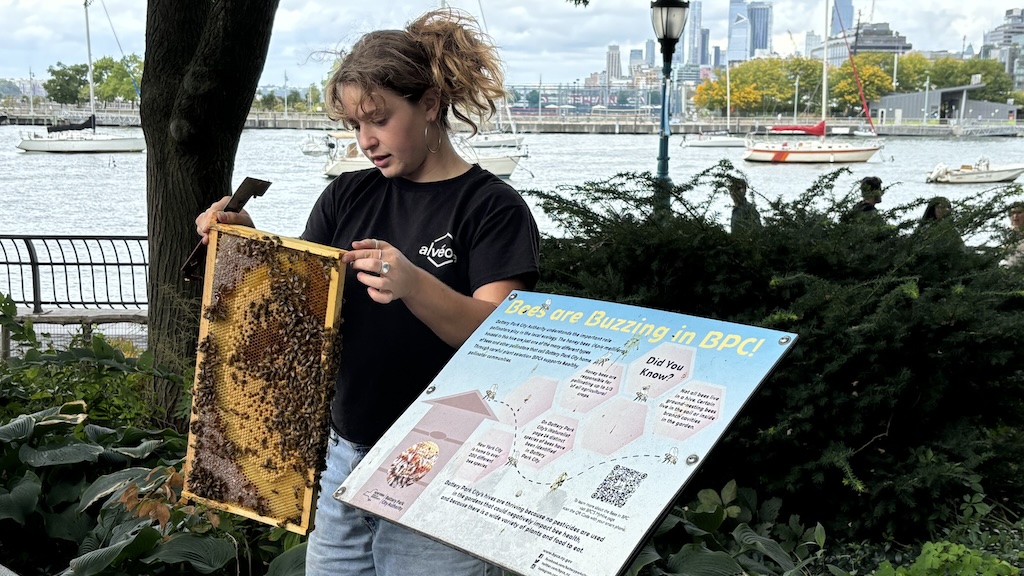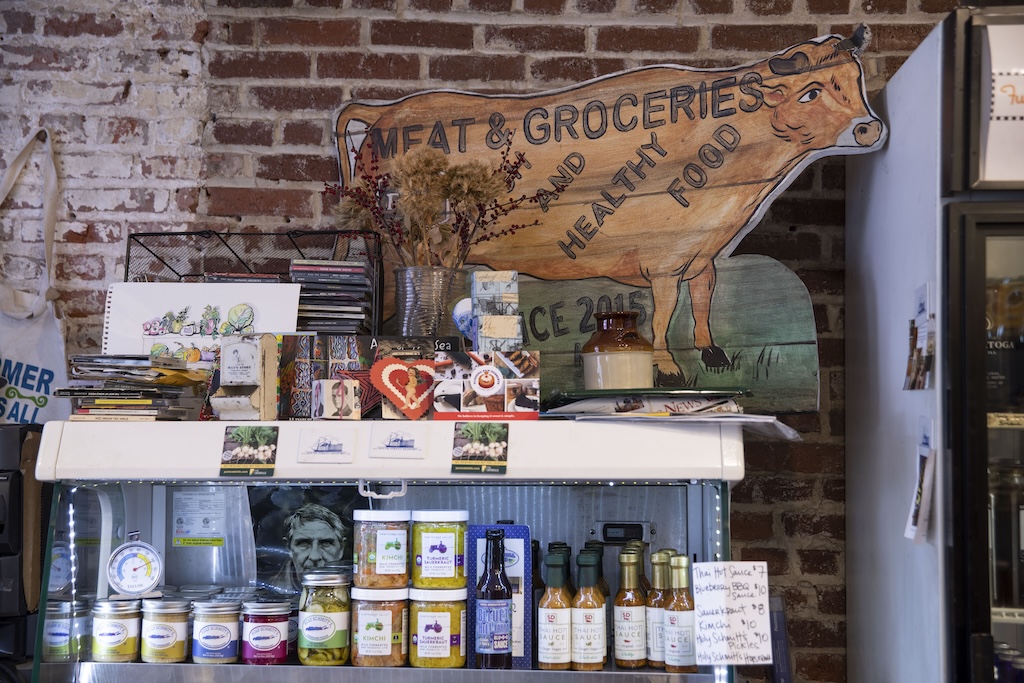Truth Bee Told: All About Honeybees in Lower Manhattan

Lower Manhattan is a melting pot of cultures where nearly 70,000 people call home — and, thankfully, so do about 20,000 Italian honeybees.
“If you leave a hive alone they can usually figure it out,” Dorothy Braun, an urban beekeeper, told the Downtown Alliance, “but especially in a place like [New York City] they need help sometimes.”
Braun works for Alvéole, an urban beekeeping company that partners with mostly commercial properties in 60 cities across North America and Europe. Braun takes care of 50 hives, including one in Battery Park City’s Rockefeller Park.
At a recent event in Rockefeller Park, Braun explained how she checks that her hives (and queens) are healthy on a monthly basis. With honeybees, it’s more about the collective than it is about the individual. For example, beehives as a whole have the ability to recognize human faces. Though smart, the average lifespan of one honeybee is only 30 days. So while an individual bee might not be around to remember Braun next month, the hive’s collective informational background probably will. “My hives definitely recognize me,” Braun said.
Each time they forage, they can fly about a three mile radius around their hive, but usually not over large bodies of water. (Chances are, our Lower Manhattan bees don’t commute to the outer boroughs!) Braun told us this is where the term “beeline” comes from — the fact that honeybees fly straight from one pollinator plant to another to find food.

Thanks to the abundance of planted infrastructure in the city, including green roofs, parks and more, Braun says most buildings are good candidates for tended beehives, with a few exceptions: Alvéole draws a hard line at any location above the 40th floor, and they also try not to overpopulate areas so hives don’t have to compete for food.
We asked Braun more about honeybees, how they help the neighborhood and how we can help them.
How do bees benefit the neighborhood?
Bees benefit our neighborhoods in countless ways. Not only do they pollinate flowers, which make our streets, gardens and parks more visually beautiful, but they also contribute to the overall health of the ecosystem. Diverse and healthy plants equal diverse and abundant food/habitat, so all kinds of bugs, birds and other animals want to do their part in being our neighbors!
What can regular people do to help bees thrive?
To help bees and other pollinators thrive, we can all plant some wildflowers. It’s pretty easy to get your hands on a pack of native wildflowers local to your area, and they’re super low maintenance. Plant in a planter on your fire escape — the bees will find it no matter where it is, so the more we can provide them with food, the better.
What’s one fact that you think most people would be surprised to learn about honey bees?
One of my favorite bee facts is that their antennae are used for all of their senses. Unlike humans, they can taste, touch, smell, hear and more through sense receptors in their antennae. That said, they have other receptors all over their bodies…they can also see with their five(!) eyes, and taste through the bottoms of their little feet.


